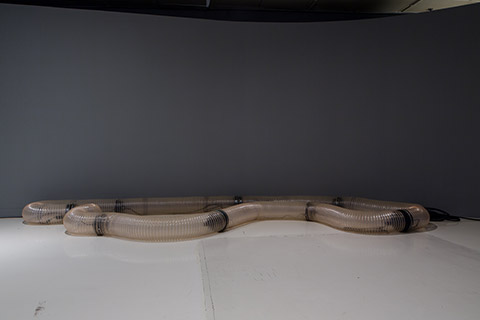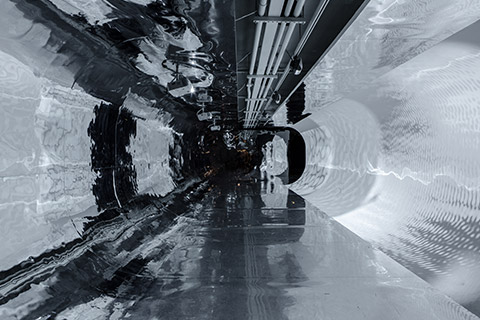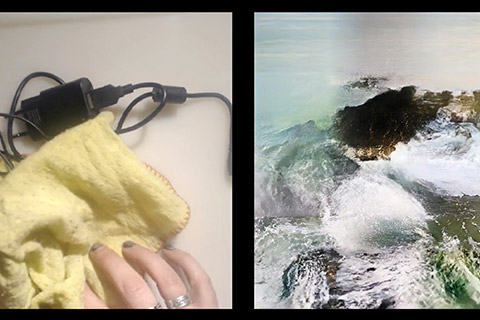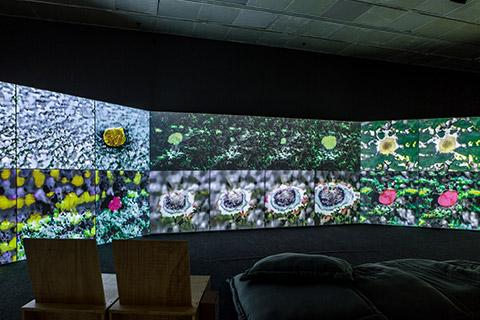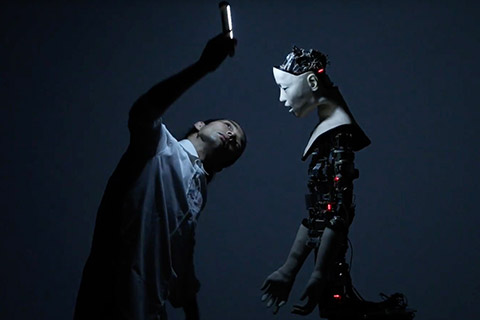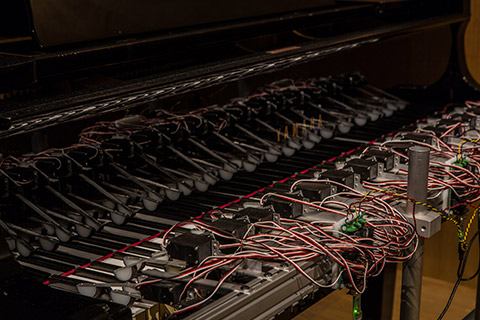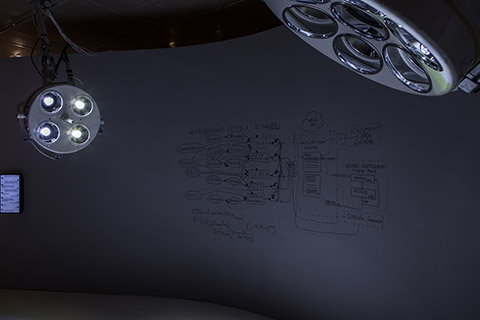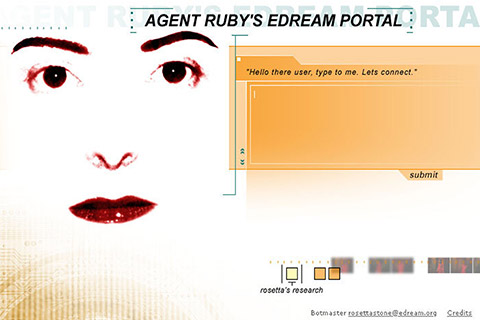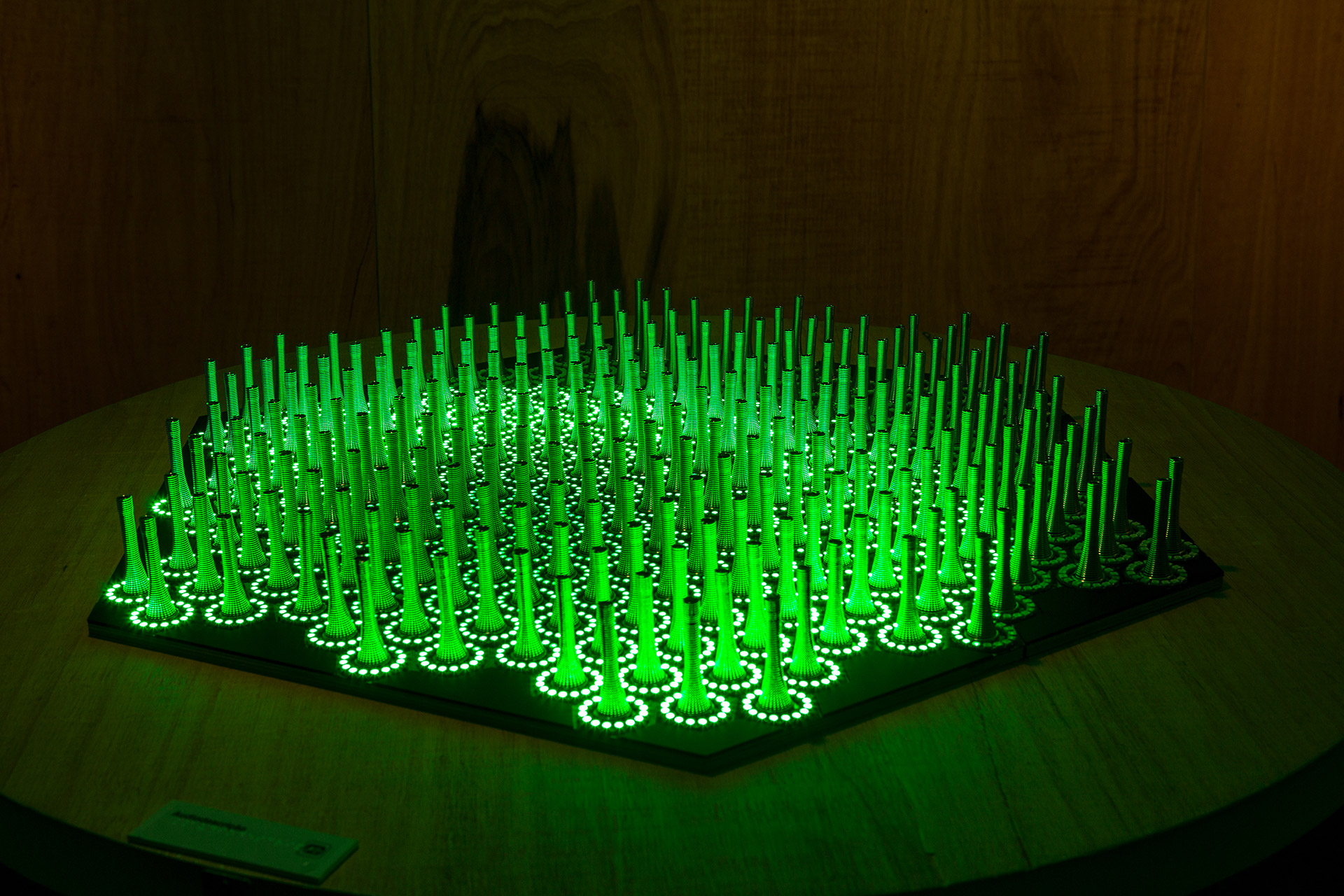
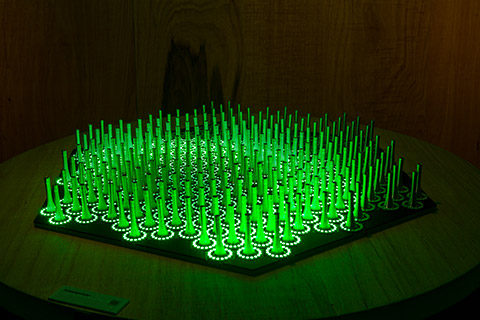
image: André Seiti
Quantum computing is an interesting – and to many – mysterious research area that is quickly garnering the attention not only of scientists, but also the general public and artists. To understand the opportunities that quantum computing, and more generally quantum physics and quantum mechanics can offer, I’ll take a look at what distinguishes quantum physics from other fields, and what makes these differences interesting.
Quantum computing uses quantum-mechanical phenomena, such as superposition and entanglement. These are phenomena at a microscopic scale, too small to be seen or even directly measured and they have barely any effect on our macroscopic world that is ruled by classical physics.
This means we artists have to rely on our imagination when creating art surrounding quantum physics. Luckily for us, there’s a broad body of material to be inspired by, such as philosophical implications of the lack of causality and determinism, entanglement effects that Einstein described as “spooky action at a distance,” and theories with science-fictiony names, such as quantum teleportation, quantum cryptography and quantum decoherence (which, for example, states that parallel universes will never be accessible to us – unfortunately).
Despite sounding far-fetched, a lot of these effects are already being used by modern technology, such as MRI scanners, lasers, and even transistors and diodes. A major research area is quantum computing, which, instead of classical 0-or-1 bits uses qubits that represent a mixture of states (called a superposition of states). These qubits help quantum computers be much better at solving certain difficult problems, but also make it much harder to program.
Using these computers to create art sounds like a great challenge, and I can’t wait to see what new fantastic results that will bring. However, quantum computing is still decidedly in its infancy, and existing quantum computers are academic proofs of concepts at best. So for now, we are limited to classical computers if we want to play with quantum effects and use simplified simulations to get results.
That is what I have done with Quantum Garden, an interactive installation using springs and LED rings to visualize one of these simplified simulations. The installation has 228 touch-sensitive springs arranged in a hexagonal layout, each of which is surrounded by an LED ring. These LEDs are individually controlled from a computer running the installation, waiting for audience input, changing the parameters of the simulation accordingly, then running through the simulation of the quantum computing algorithm, and finally outputting the results as concentric rings on the screen.
Visually displaying results of any quantum phenomenon will necessarily require a lot of artistic creativity, since these effects appear on scales too small for colors to even exist. This lack of constraint gives artists a great deal of freedom to represent quantum data, especially if rigorous scientific accuracy isn’t necessary.
For Quantum Garden, I took a graph of one variable in the quantum simulation and plotted it in a polar (circular) animation where small values result in small rings and large values result in large rings. The variable I used is the distribution of the quantum states in an idealized one-dimensional gas during a process called STIRAP. However, it’s not necessary to understand the finer details, and in fact, without studying quantum mechanics for a good while, it would be very hard to really grasp the meaning of this experiment – I certainly only understand a very simplified version that the theoretical physicists from Turku University, in Finland, explained to me. For all I (and the audience) know, larger values of the variable are better, and thus, larger rings in the animation are better. This correlates nicely with more “action” on the LEDs of the installation piece – big colorful rings are prettier and more exciting than a small ring, thus giving the audience an intrinsic reward for “playing well.” It is giving the audience a goal to reach, thus making them players in a game. Making it easy to understand how to improve your results in the interaction actually helps the scientists too: I can give them data of all the interactions where people try to improve their results – and perhaps the scientists can train an artificial intelligence (AI) how to improve the result of the quantum simulation in turn! In that way, making beautiful art can also help science to improve their models. This is certainly an ideal scenario, and perhaps rigorous theoretical science is more precise than an AI trained on human results can be. With the peculiarities of quantum physics, this is hard to predict, though.



